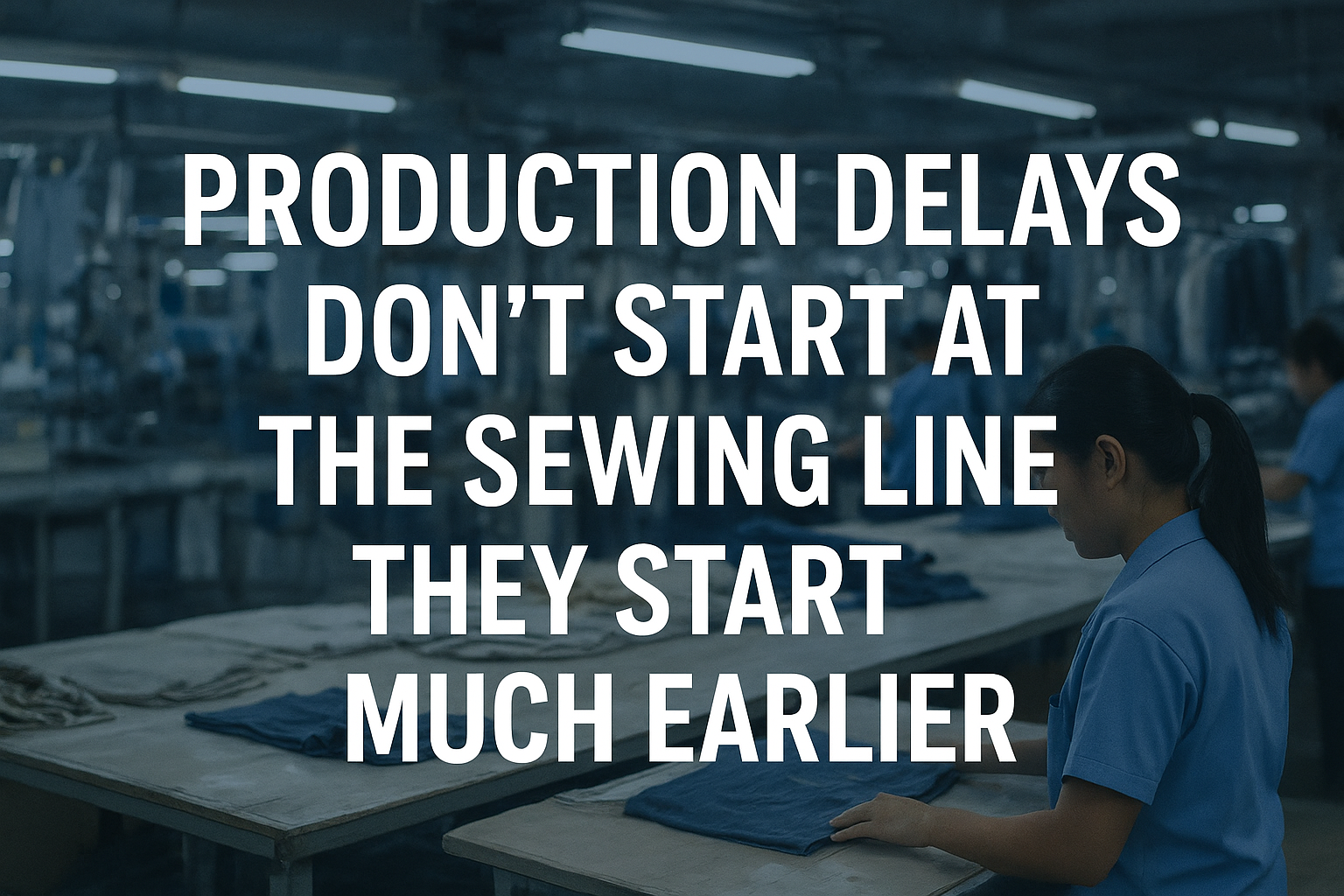End2End Solutions

Production Delays Don’t Start at the Sewing Line
They Start Much Earlier
In many apparel factories, the sewing line gets blamed every time production targets are missed. Discussions immediately shift to operator skill, machine downtime, or low efficiency reports. But here’s the truth most factories overlook:
Sewing lines don’t create delays — they expose them.
By the time a style reaches the line, the delay is already built into the system.To solve production delays permanently, we need to stop managing lines and start engineering flow -from day zero of the style lifecycle.
The Real Point Where Delays Begin
1. Style Enters Production Before It’s Fully Ready
The most common factory mistake is pushing a style into production without complete readiness. Approvals are still pending, trims are partially received, patterns are still being corrected — yet the line is loaded.
This creates stop-start sewing, multiple breakdown meetings, and rushed decision-making during production. The delay begins long before the needle drops.
If a style is not 100% ready, the line becomes a waiting area — not a production zone.
2. Material and Trim Misalignment Creates Hidden Waiting Time
Fabric might be in-house, but labels and accessories are still “on the way.” Bulk approval is received, but packaging confirmations are pending.
What happens next? Bundles move halfway and stop. Work-in-progress begins to pile. Supervisors get blamed for "poor control," but the truth is — planning released the style without material alignment.
Most factories track sewing efficiency but don’t measure waiting time caused by planning misalignment — and that's where true delays live.
3. Line Loading Based on Assumptions, Not Real Capability
Another root cause is overconfident loading plans. Industrial engineering might calculate a theoretical capacity, but actual line behavior depends on operator maturity, product complexity, and motion flow — not just target pitch.Factories push targets that look good on paper but do not match real capability. This pressure leads to last-minute overtime, absenteeism impact, and constant fire-fighting after mid-line reviews.
4. No Buffer Strategy – One Delay Triggers a Chain Reaction
In a well-structured factory, there are buffers built strategically — in planning timelines, in raw material arrival, even in manpower deployment.
In factories without buffers, every small disruption becomes a crisis. A missing trim can stop 60 machines. A delayed approval can pause an entire section.
Buffers are not a sign of weakness — they are a sign of professional planning.
The Floor Is a Mirror-It Reflects Upstream Decisions
We often hear: “Operators are slow today.”
But a consulting-driven perspective asks a different question:
"Did we prepare the flow well enough for them to perform?"
A factory floor always tells the truth. If the floor is unstable, it means the system feeding the floor is unstable. That system includes:
When these areas are controlled with clarity, production flows naturally-even under pressure.
